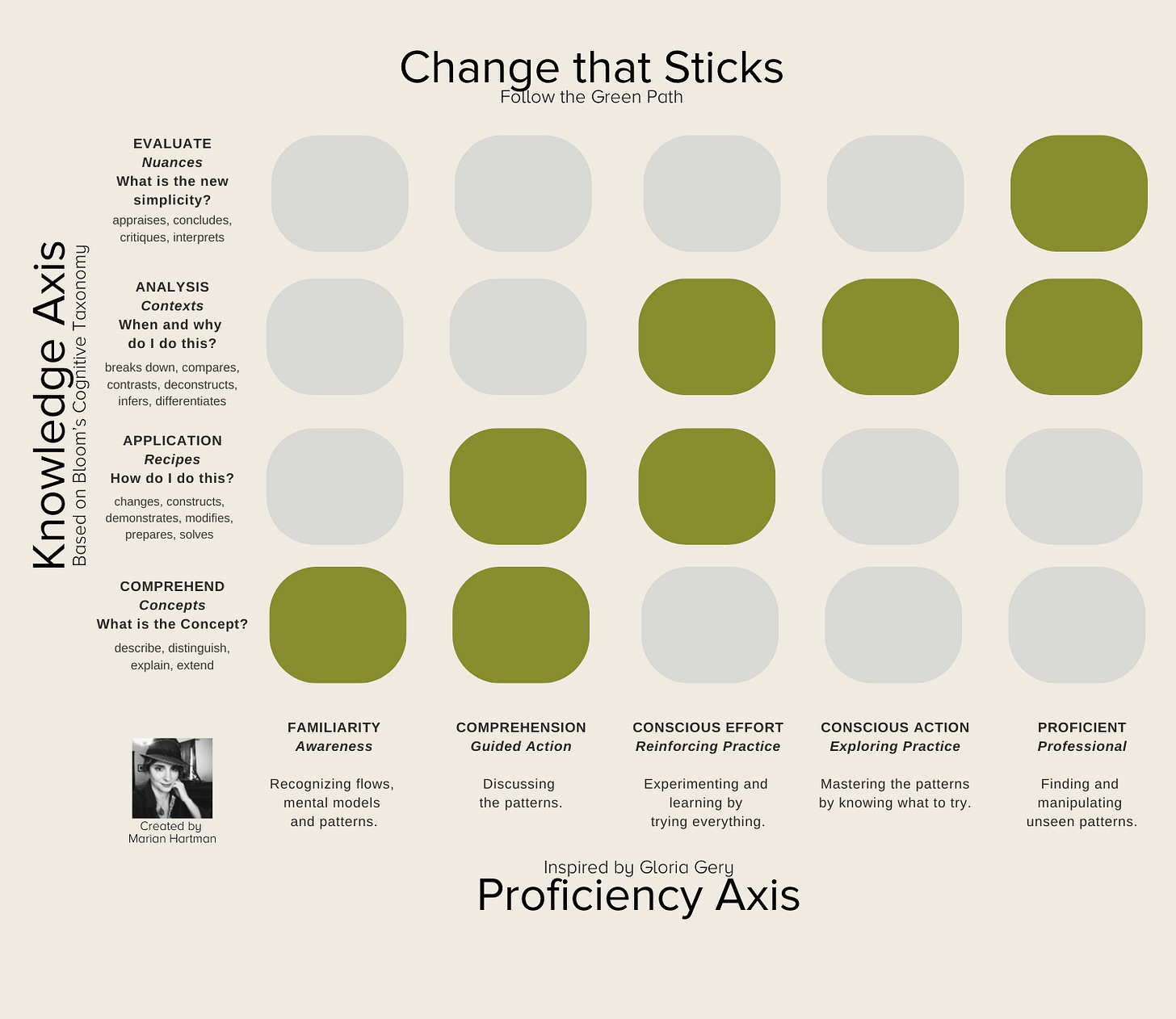Let’s consider the typical two-day, slideware-driven certification workshop. The certification is sold as a way to authenticate the participant’s capability to perform a certain way in the workplace. Yet, given the design, all it can deliver is information.
Why does it fail?
Because, as described in getting from information to change, we are promising on the proficiency axis while delivering on the knowledge axis.
The pendulum swing reaction would be to simply deliver on the proficiency axis. That is what most XP mentors attempt to do when pairing. Through pairing while focusing on proficiency, mentors can provide high proficiency on TDD in 18 months. Disclaimer: we’re talking about deep mastery, not 1-week introductions.
There is an option in the middle. By both increasing knowledge sophistication and increasing proficiency simultaneously, my work with Arlo Belshee got clients to high proficiency on TDD in 3 months.
The bottom line?
Knowledge levels must align with behavior practice.
In fact, this was important enough that I made a diagram and colored the aligned boxes green.
The green path is where the practitioner’s cognitive understanding aligns with the desired behaviors. They have the same refinement in their thinking and doing.
So whether you are aiming for a single learning experience, workshop, or major change initiative, ask yourself some questions.
Where are my students at coming in?
Where do I want my students upon exit?
Am I trying to increase knowledge sophistication?
Am I trying to improve proficiency mastery?
Am I on the green path?
These answers will help you move that much closer to designing for real change that sticks!

